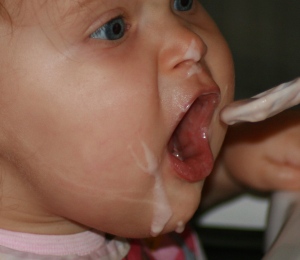NOTEWORTHY WEDNESDAY!

“J.Crew.com features top picks from its President and Creative Director Jenna Lyons—and her latest set featured a casual striped pullover, along with a pic of her and her son, Beckett, who’s sporting hot pink-painted toenails.
The caption accompanying the photo says: “Lucky for me, I ended up with a boy whose favorite color is pink. Toenail painting is way more fun in neon.
via Is it OK for Boys to Wear Toenail Polish? – Parenting.com.
Of course it is okay for boys to wear toenail polish if they want to do so.
And yes, this young boy seems to be having a jolly old time playing and posing with his mother and his neon pink toenails.
There is so much media attention being given to this photo and what it may or may not be saying about the sexuality of this young child.
As a clinical social worker, what I see here, is a child playing…what I know from the small print is:
- he is playing with his mother and
- he seems to be having fun.
What I would say a definitive NO to, is using this innocent moment to sell merchandise or make any kind of statement about gender confusion.
It is my opinion, by posting this particular photo and comment, J. Crew is using this child’s playful moment to create a contrived controversy to promote its’ brand with the help and sanction of this little boy’s mother, who just happens to be an executive with J. Crew.
I would not throw my child’s playful moment into such a spotlight. I would cherish it.
This child is not the one craving to be the center of attention nor does he want to make any serious statement about his love of pink toenail polish. It seems it is his his mother’s need to say something here.
This little playfully sweet photo seems to be saying two things:
- being a ‘princess boy ‘is okay and
- J. Crew is accepting and is therefore okay too.
In the past few days, there has been another child in the media’s lens …a little girl who seemed to be physically exploited by a TSA agent who was doing her job and searching the child prior to boarding her flight.
So it seems, we have two children in the news who have been exploited…one physically and one emotionally.
The difference is that the parent of the child being searched was outraged.
On the other hand the mother in the J. Crew picture was willingly part of the exploitation of her own child.
Shame on her…






